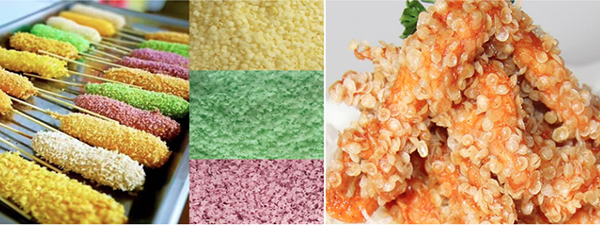Food colorings play a vital role in enhancing the visual appeal of various food products. They are used to make food products more attractive to consumers. However, the use of food colorings is subject to strict regulations and standards in different countries. Each country has its own set of regulations and standards regarding the use of food colorings, and food manufacturers must ensure that the colorings they use meet the standards of each country where their products are sold.

In the United States, the Food and Drug Administration (FDA) regulates the use of food dyes. The FDA has approved a range of synthetic food colorings that are considered safe for consumption. These include FD&C Red No. 40, FD&C Yellow No. 5, and FD&C Blue No. 1. These pigments are used in a wide range of food products, including beverages, confectionery and processed foods. However, the FDA also sets limits on the maximum allowable levels of these colorants in different foods to ensure consumer safety.
In the EU, food colorings are regulated by the European Food Safety Authority (EFSA). The European Food Safety Authority assesses the safety of food additives, including colorants, and sets maximum permissible levels for their use in food. The EU approves a different set of food colorings than the US, and some colorings allowed in the US may not be allowed in the EU. For example, the EU has banned the use of certain azo dyes, such as Sunset Yellow (E110) and Ponceau 4R (E124), due to potential health concerns.
In Japan, the Ministry of Health, Labor and Welfare (MHLW) regulates the use of food dyes. The Ministry of Health, Labor and Welfare has established a list of permitted food colorings and their maximum permitted content in foods. Japan has its own set of approved colors, some of which may differ from those approved in the US and EU. For example, Japan has approved the use of gardenia blue, a natural blue pigment extracted from the gardenia fruit that is not commonly used in other countries.
When it comes to natural food colorings, there is a growing trend to use plant pigments derived from fruits, vegetables, and other natural sources. These natural colors are often considered healthier and more environmentally friendly alternatives to synthetic colors. However, even natural pigments are subject to regulations and standards in different countries. For example, the EU allows the use of beetroot extract as a food coloring, but its use is subject to specific regulations regarding its purity and composition.

In summary, the application of pigments in food is subject to strict regulations and standards in different countries. Food manufacturers must ensure that the colors they use meet the standards of each country where their products are sold. This requires careful consideration of the list of approved pigments, their maximum permitted levels and any specific regulations regarding their use. Whether synthetic or natural, food colorings play an important role in the visual appeal of food, so it is important to ensure their safety and compliance with regulations to protect consumer health.
Post time: Aug-28-2024